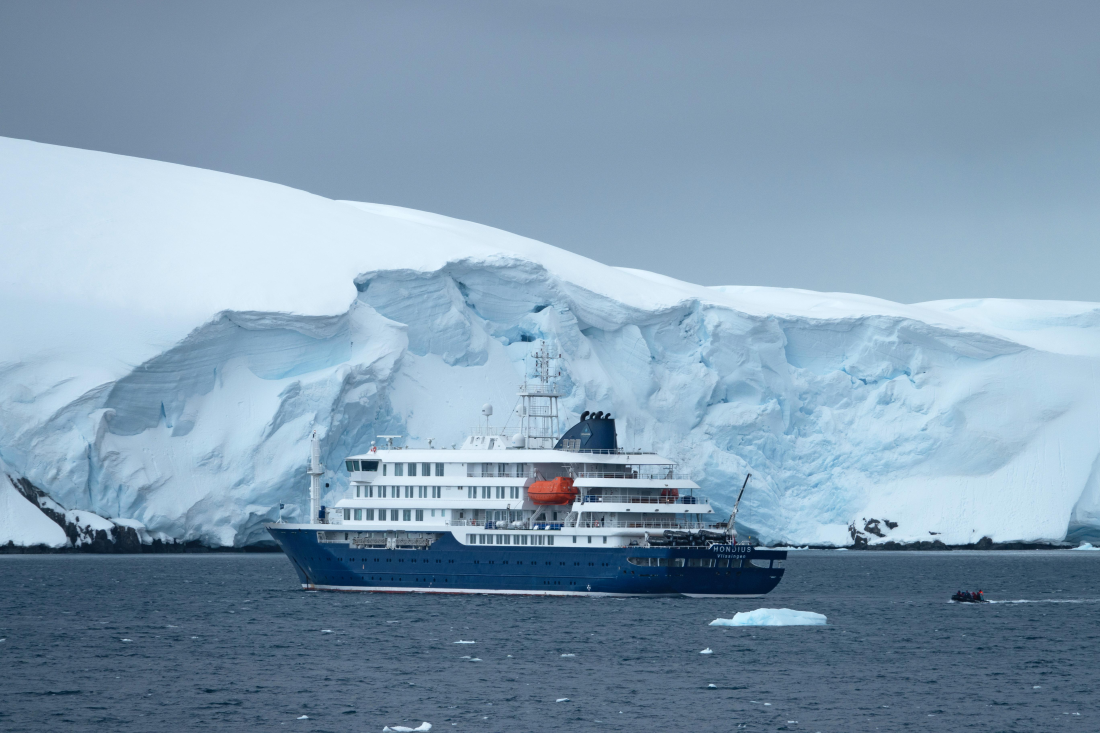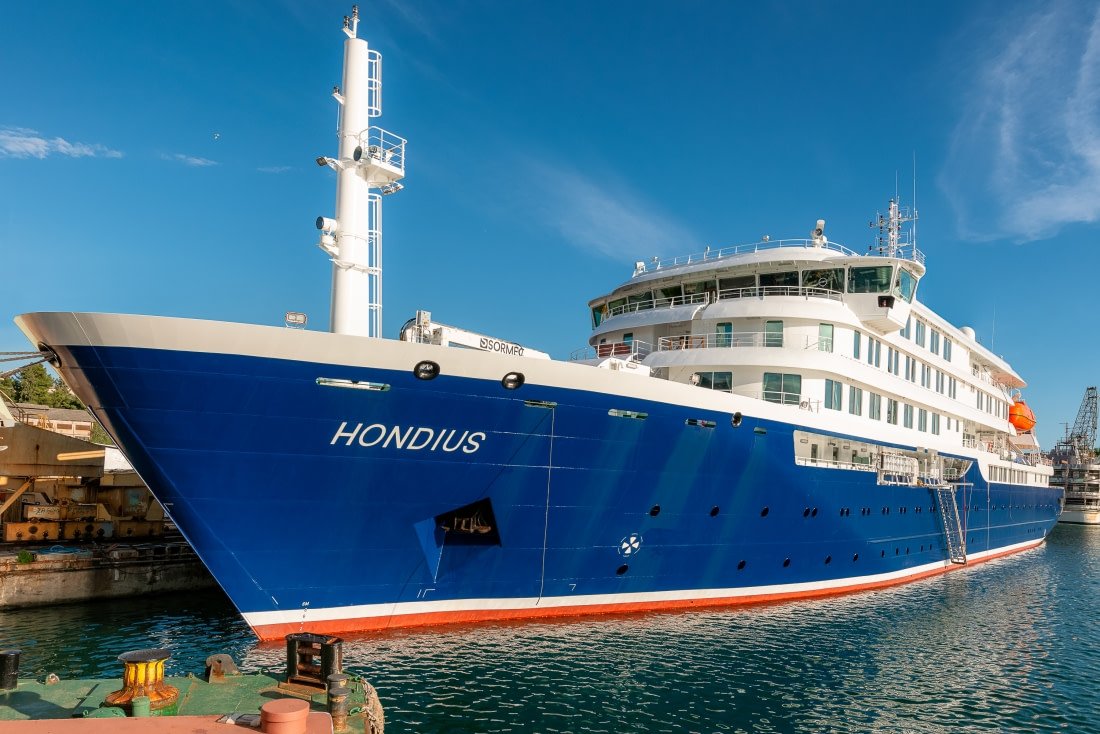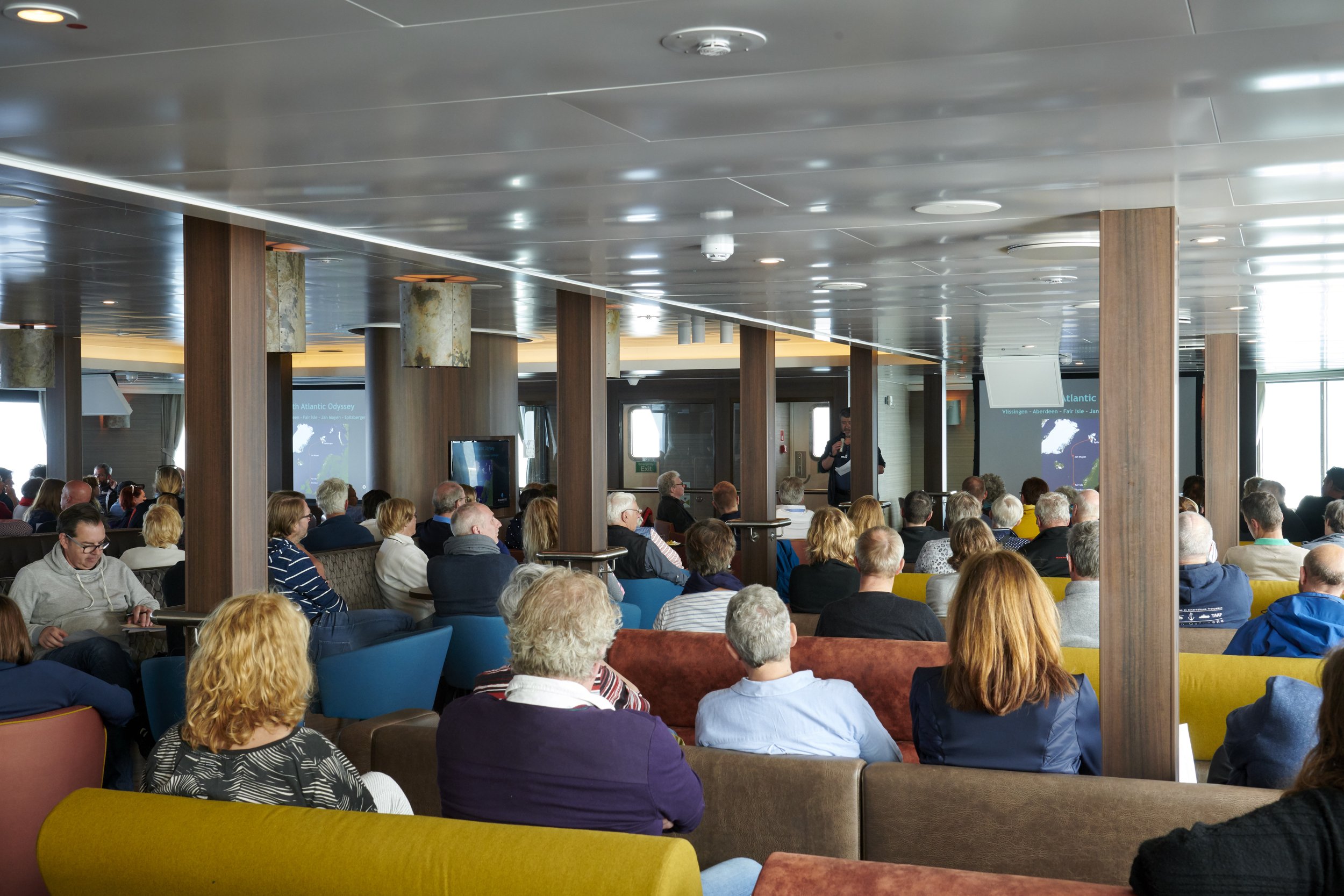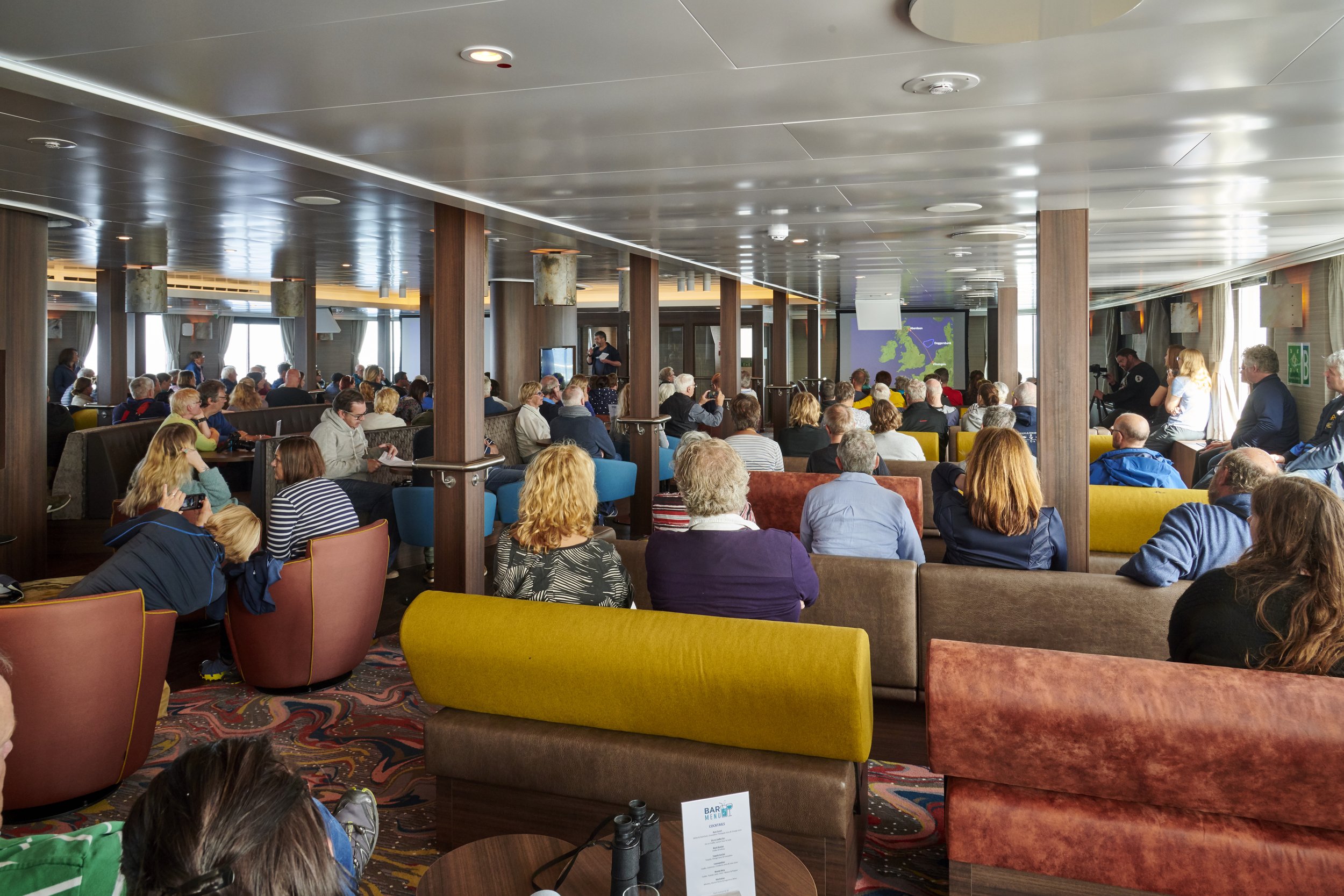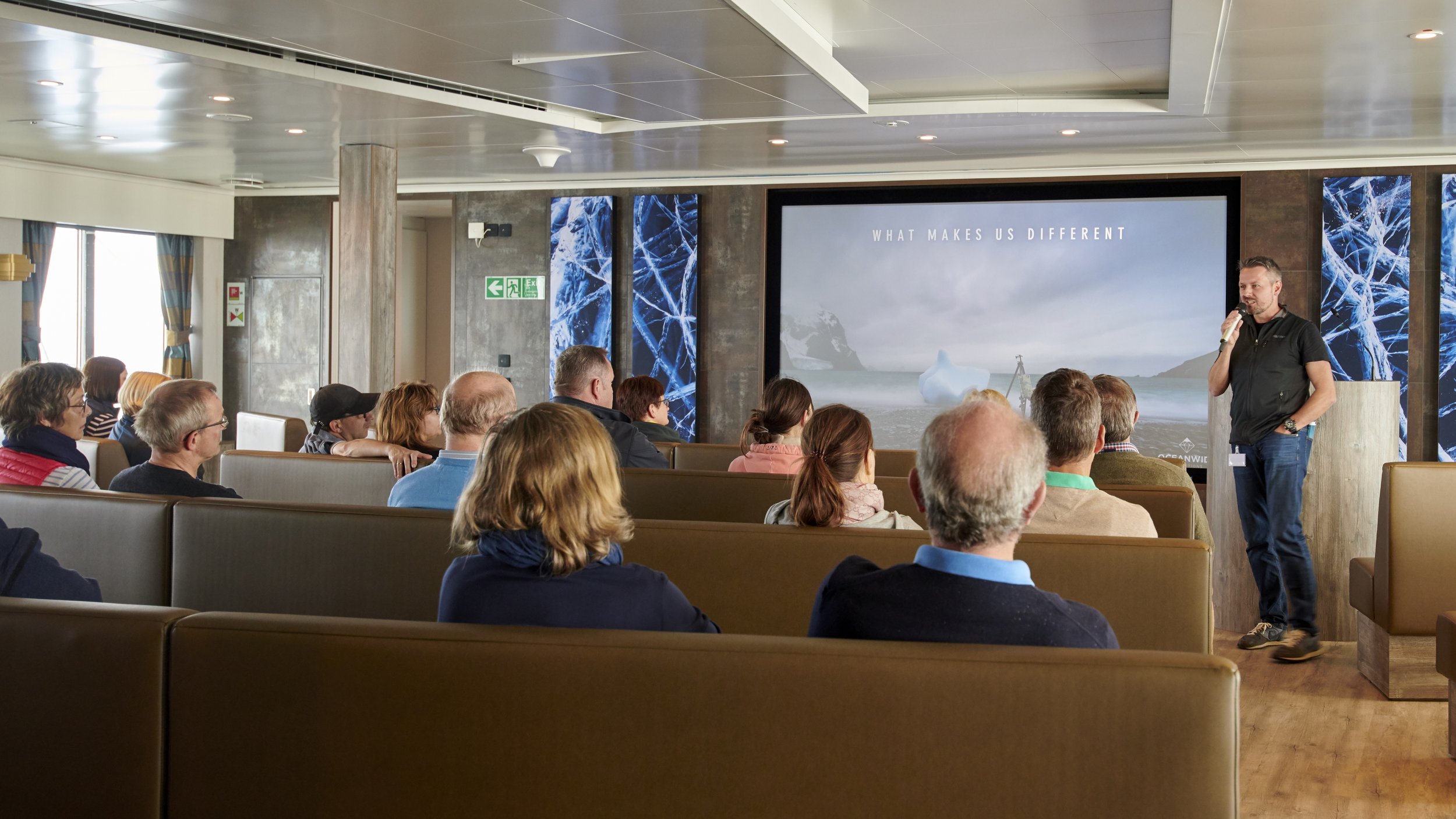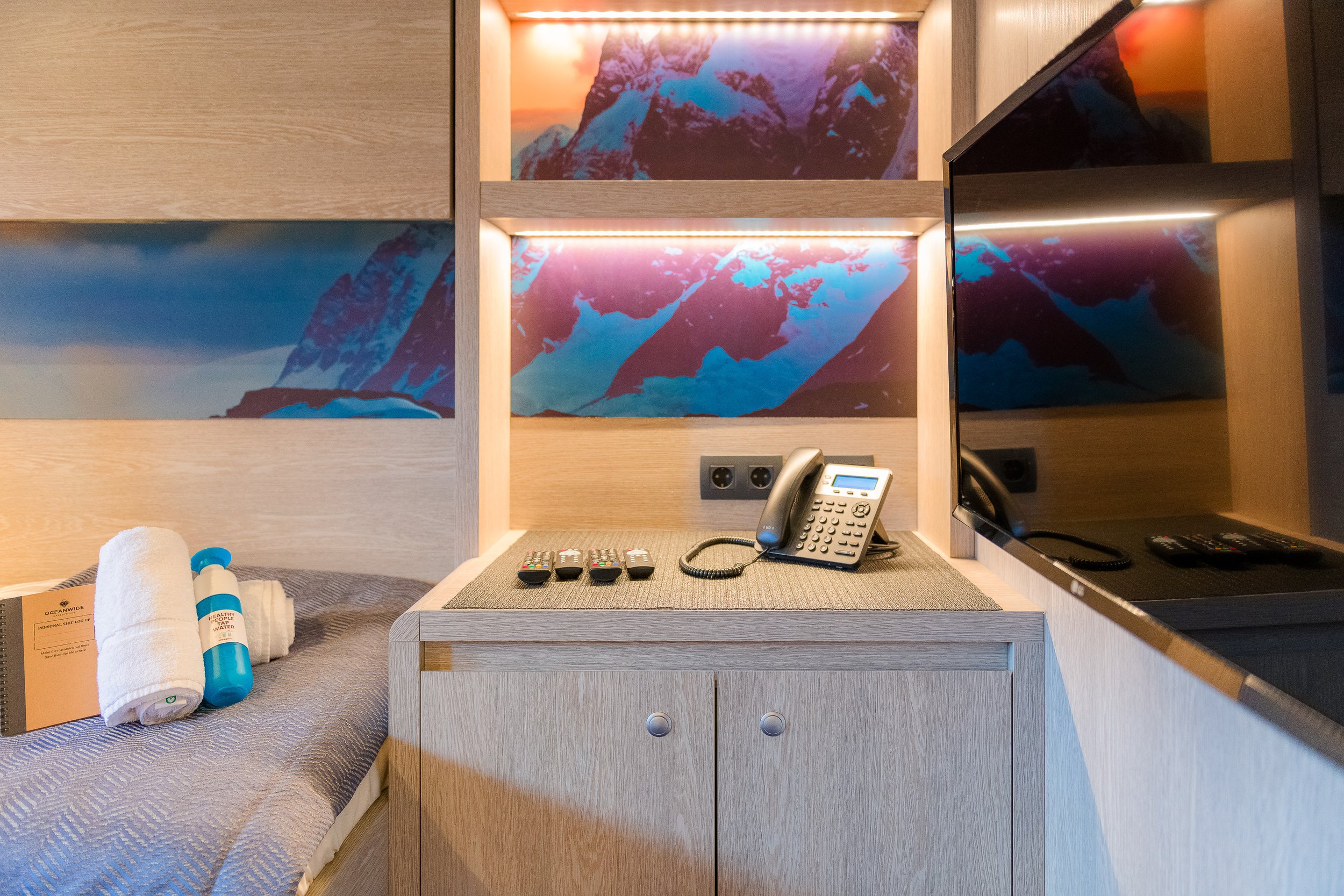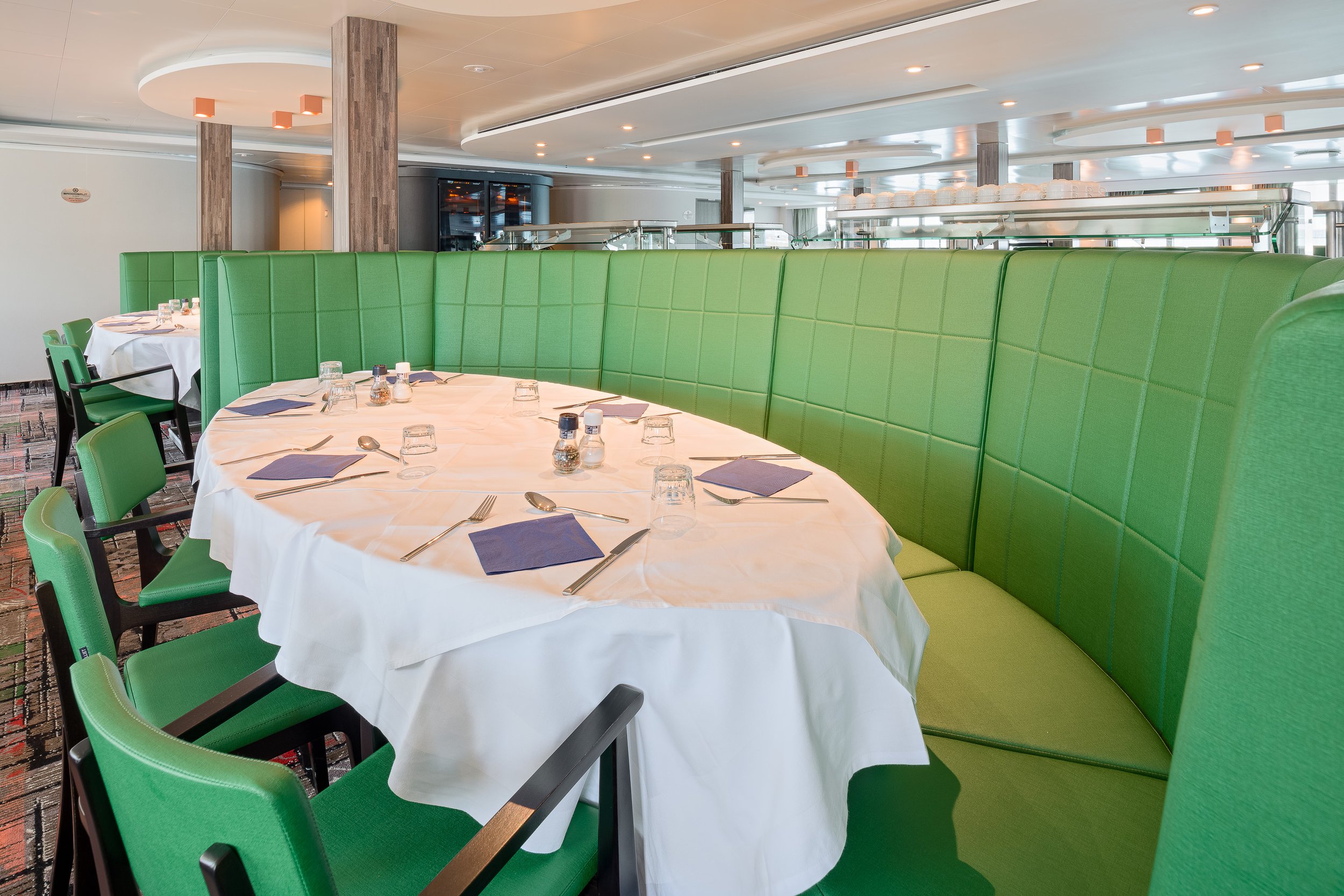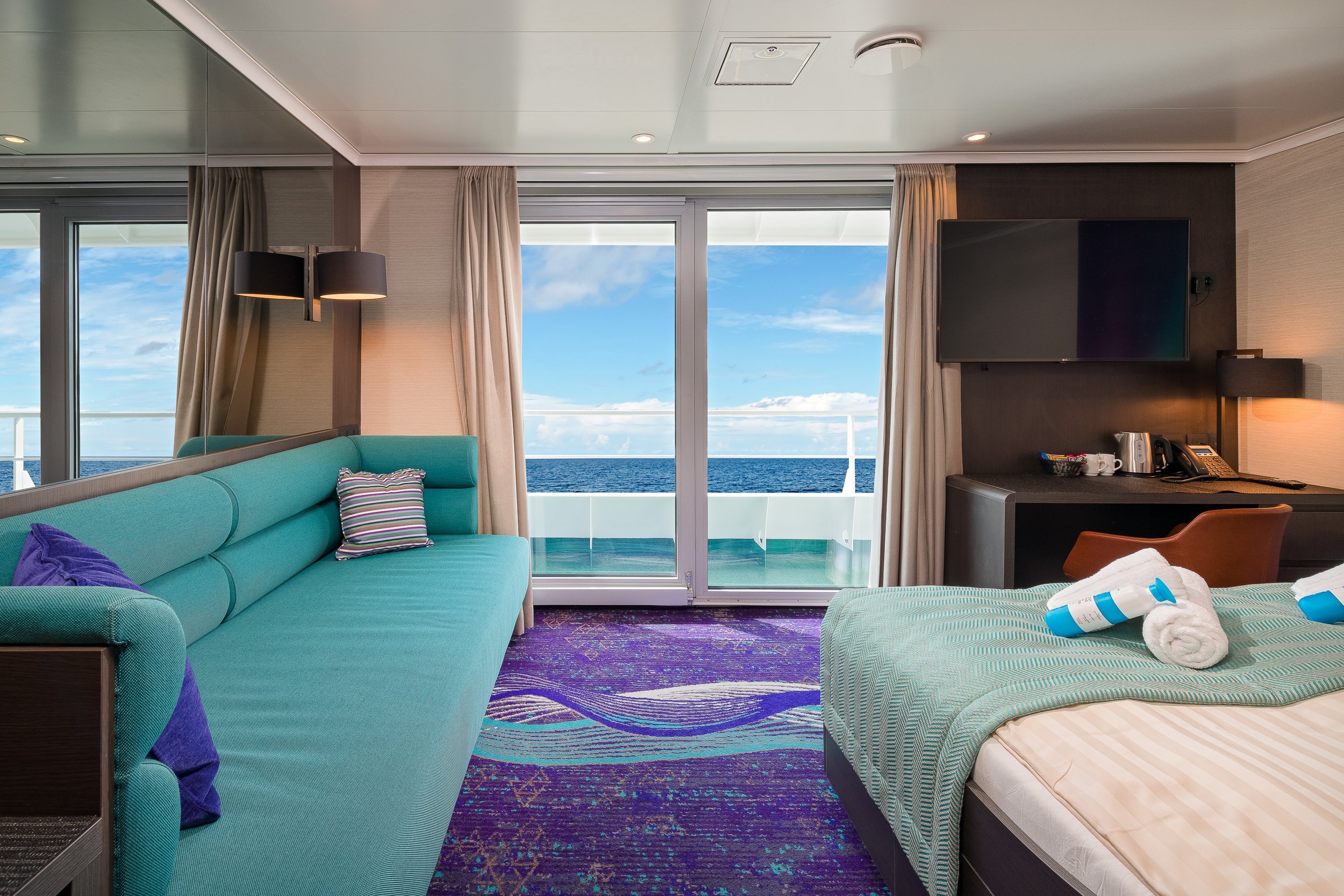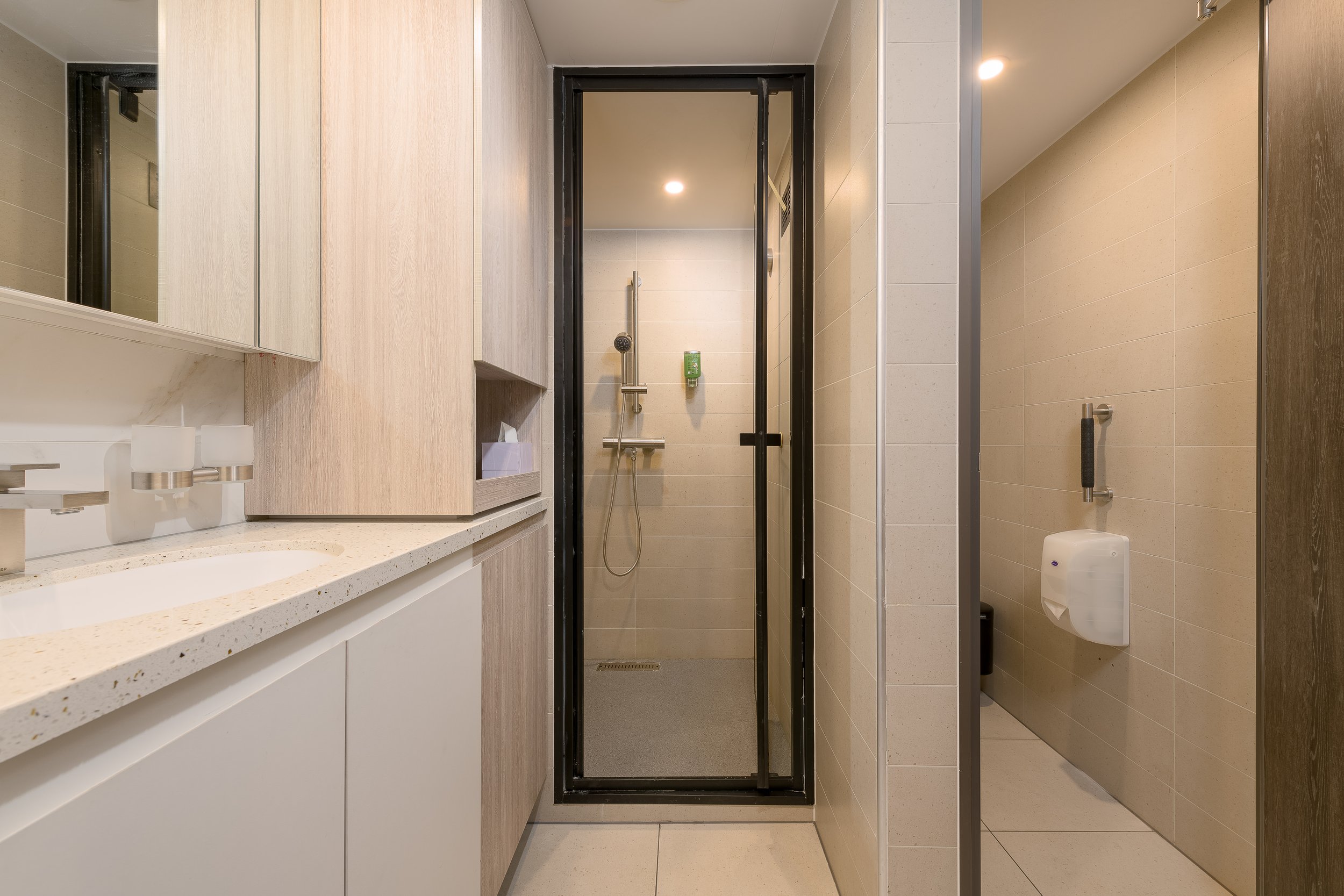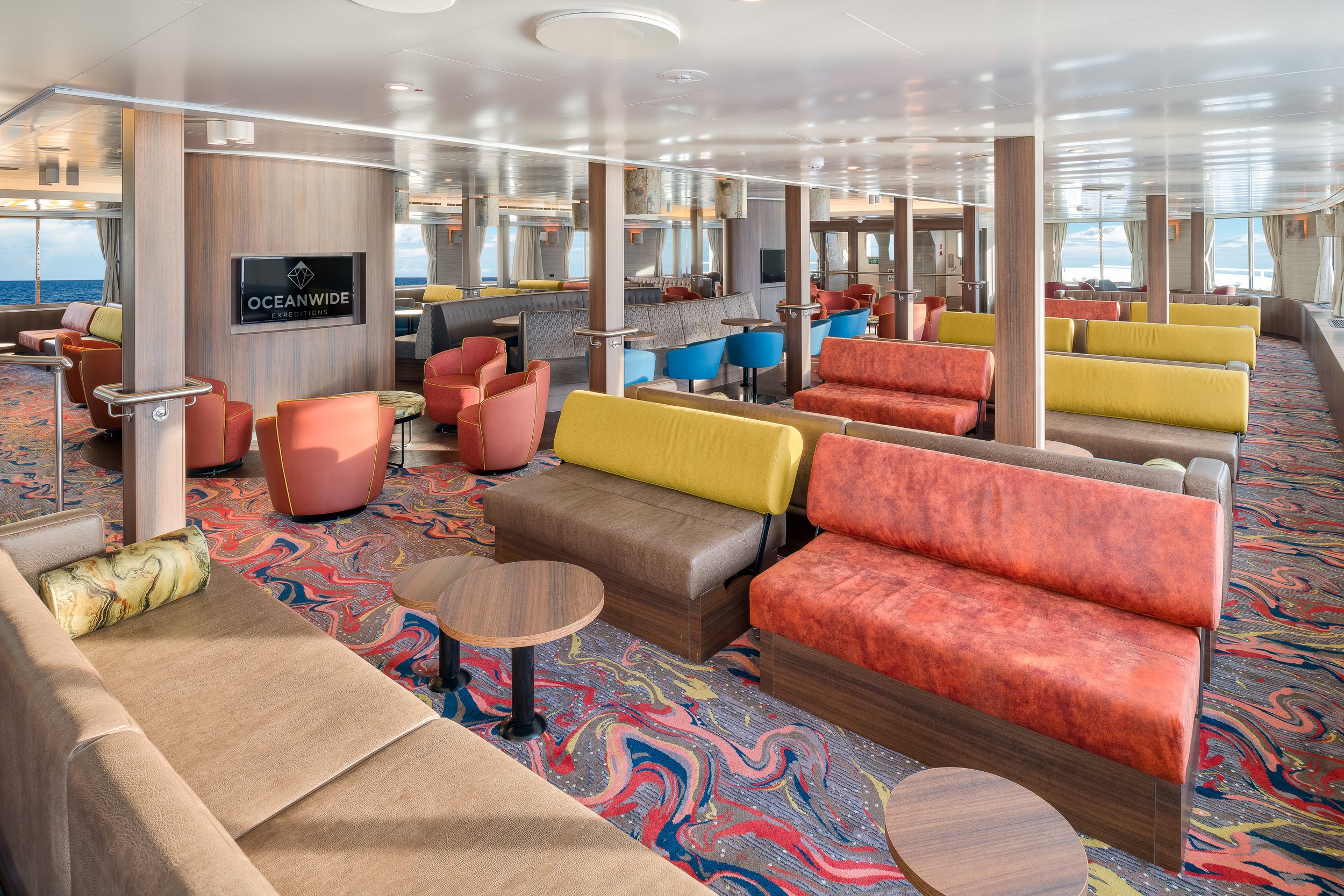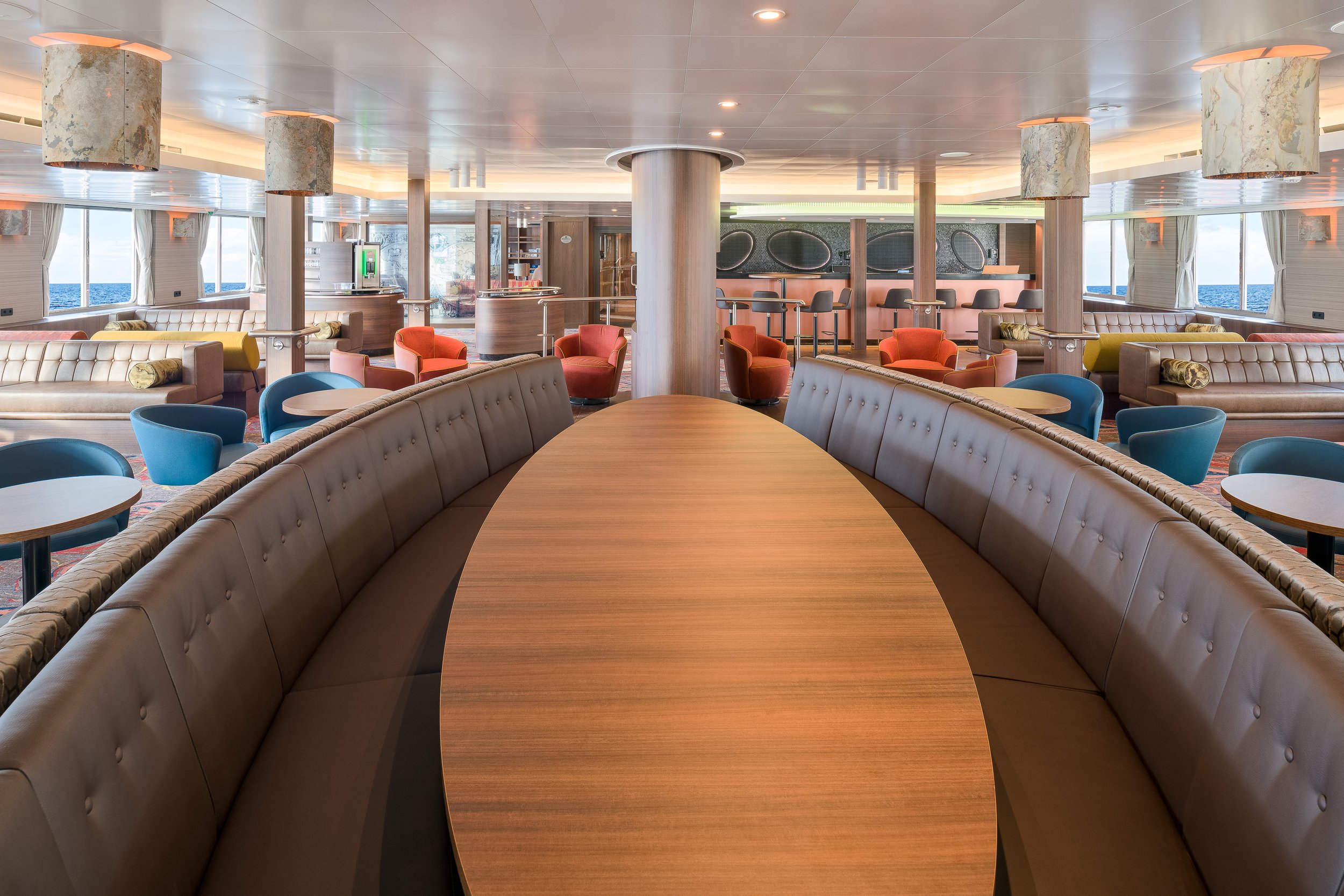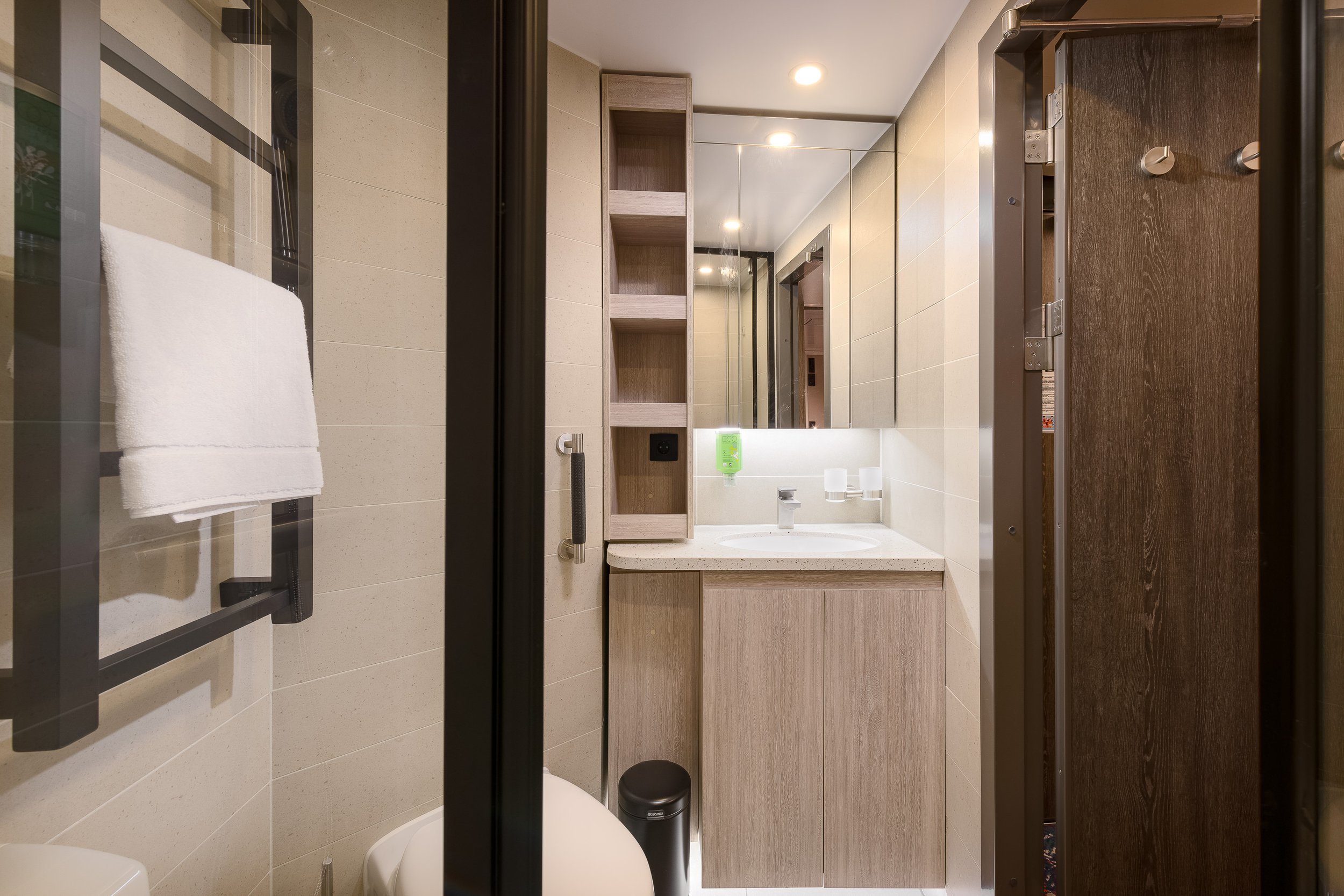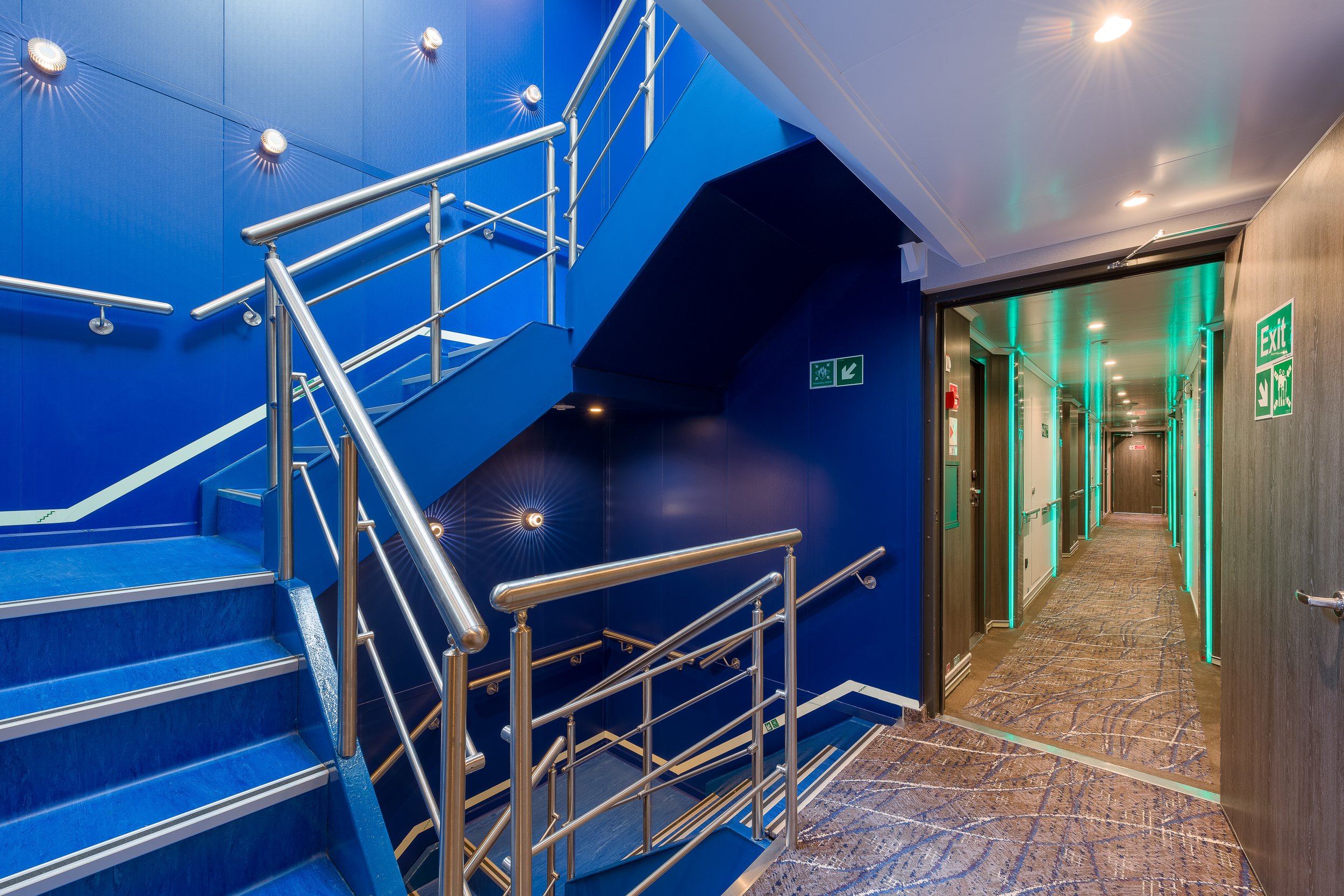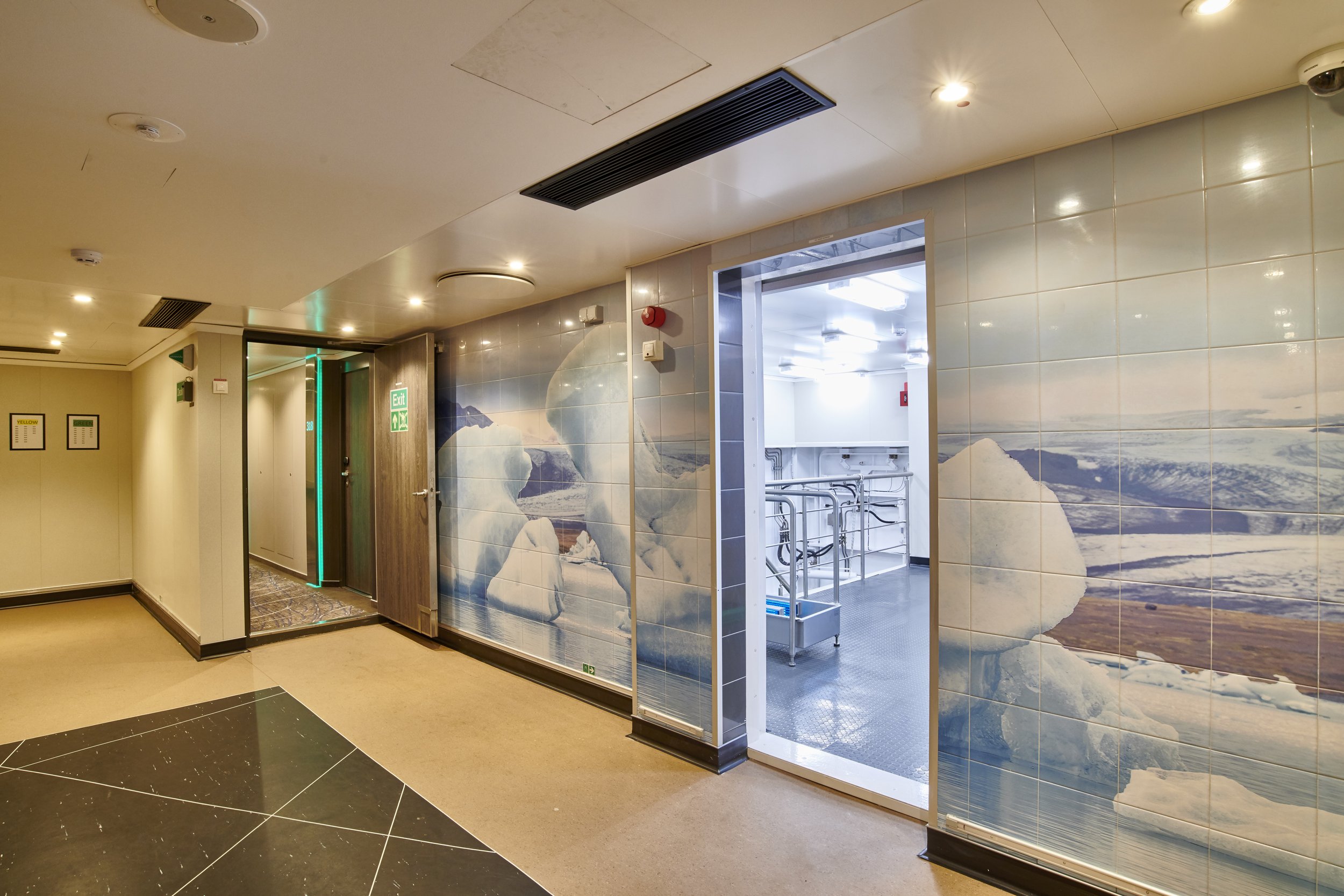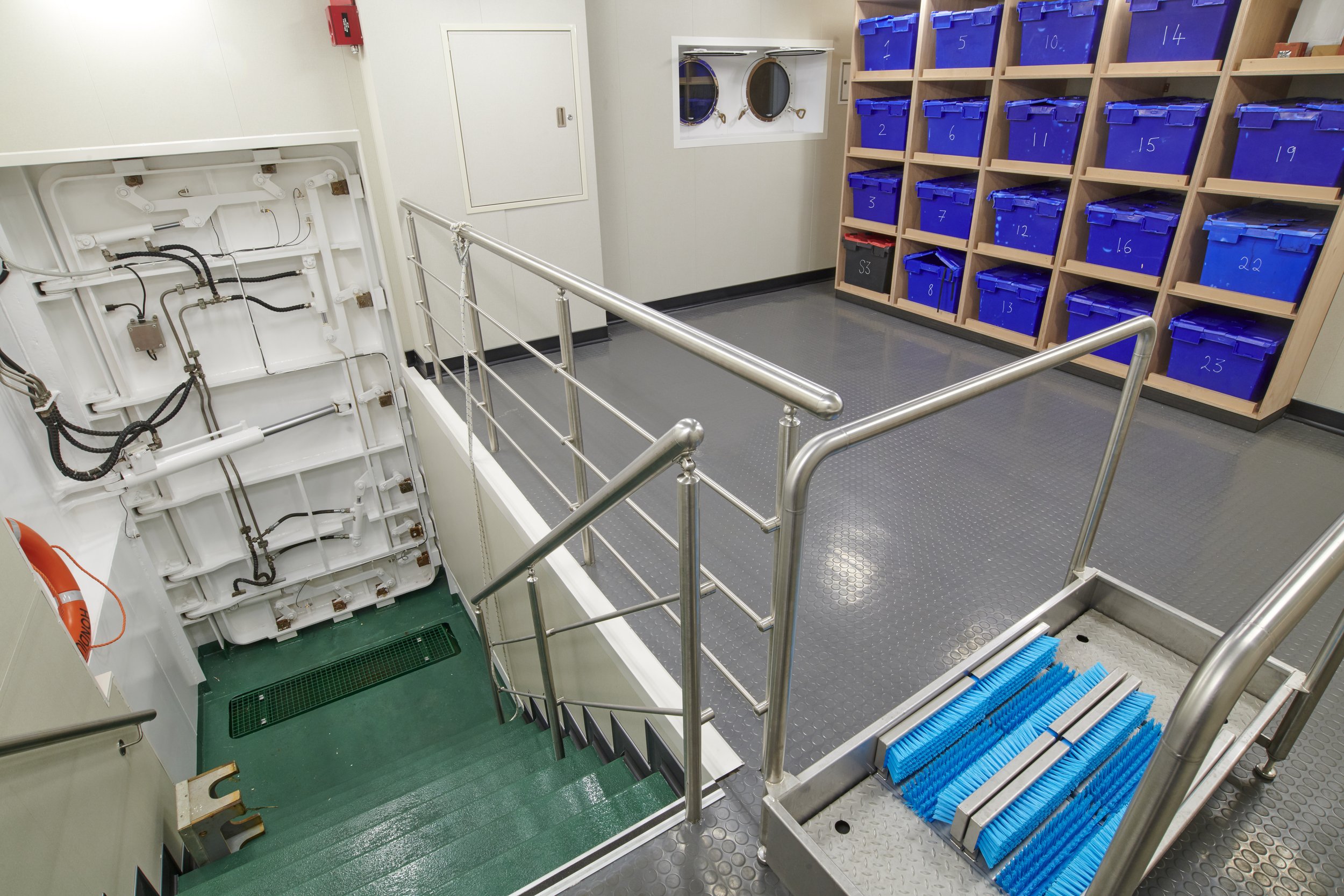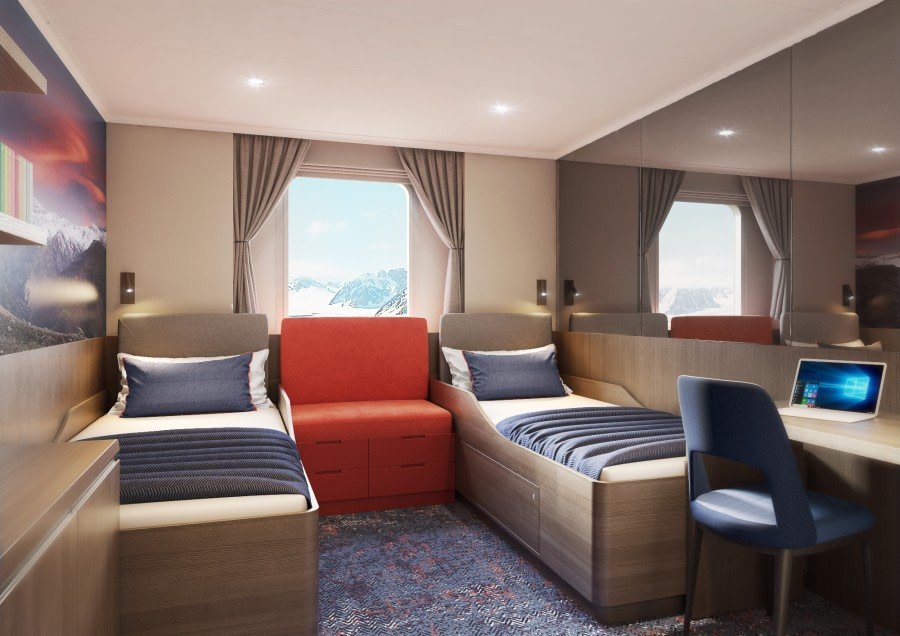
Falkland Islands - South Georgia - Antarctica
Nineteen day Falkland Islands , South Georgia & Antarctica aboard m/v Hondius Ship with Oceanwide Expeditions
Duration: 19 Days / 18 Nights
Itinerary: Falkland Islands, South Georgia & Antarctica
Departing/Returning: Ushuaia Argentina
Passengers: 170*
Ship name: m/v Hondius
Departures:
4 Jan - 22 Jan, 2025
Dates and Details.
This Falkland Islands, South Georgia, and Antarctic Peninsula cruise is an animal-lover’s dream come true. The expedition explores one of the last untamed areas on Earth – a land of ruggedly beautiful landscapes and amazingly varied wildlife.
Trip Description.
-
Day 1: End of the world, start of a journey
Your voyage begins where the world drops off. Ushuaia, Argentina, reputed to be the southernmost city on the planet, is located on the far southern tip of South America. Starting in the afternoon, you embark from this small resort town on Tierra del Fuego, nicknamed “The End of the World,” and sail the mountain-fringed Beagle Channel for the remainder of the evening.
Day 2: The winged life of the westerlies
Several species of albatross follow the vessel into the westerlies, along with storm petrels, shearwaters, and diving petrels.
Day 3: Finding the Falklands
The Falkland Islands offer an abundance of wildlife that is easily approachable, though caution is always advised. These islands are largely unknown gems, the site of a 1982 war between the UK and Argentina. Not only do various species of bird live here, but chances are great you’ll see both Peale’s dolphins and Commerson’s dolphins in the surrounding waters.
During this segment of the voyage, you may visit the following sites:
Carcass Island – Despite its name, this island is pleasantly rodent-free and hence bounteous with birdlife and many endemic species. Anything from breeding Magellanic penguins and gentoos to numerous waders and passerine birds (including Cobb’s wrens and tussock-birds) live here.
Saunders Island– On Saunders Island you can see the black-browed albatross and its sometimes-clumsy landings, along with breeding imperial shags and rockhopper penguins. King penguins, Magellanic penguins, and gentoos are also found here.
Day 4: The seat of Falklands culture
The capital of the Falklands and center of its culture, Port Stanley has some Victorian-era charm: colorful houses, well-tended gardens, and Englishstyle pubs are all to be found here. You can also see several century-old clipper ships nearby, silent witnesses to the hardships of 19th century sailors. The small but interesting museum is also worth a visit, covering the early days of settlement up to the Falklands War. Approximately 2,100 people live in Port Stanley. Admission to the museum is included.
Day 5 - 6: Once more to the sea
En route to South Georgia, you now cross the Antarctic Convergence. The temperature cools considerably within the space of a few hours, and nutritious water rises to the surface of the sea due to colliding water columns. This phenomenon attracts a multitude of seabirds near the ship, including several species of albatross, shearwaters, petrels, prions, and skuas.
Day 7 - 10: South Georgia Journey
Today you arrive at the first South Georgia activity site. Please keep in mind that weather conditions in this area can be challenging, largely dictating the program.
Over the next several days, you have a chance to visit the following sites:
Fortuna Bay – A beautiful outwash plain from Fortuna Glacier is home to a large number of king penguins and seals. Here you may also have the chance to follow the final leg of Shackleton’s route to the abandoned whaling village of Stromness. This path cuts across the mountain pass beyond Shackleton’s Waterfall, and as the terrain is partly swampy, be prepared to cross a few small streams.
Salisbury Plain, St. Andrews Bay, Gold Harbour – These sites not only house the three largest king penguin colonies in South Georgia, they’re also three of the world’s largest breeding beaches for Antarctic fur seals. Literally millions breed on South Georgia during December and January. Only during the mid-season do they peak in their breeding cycle. There will be some young adult Elephant seals as well as this seasons ‘Weaner’s; the young Elephant Seals that have been left to fend for themselves. Watch your step and stay cool when walking the beaches during this time.
Grytviken – In this abandoned whaling station, king penguins walk the streets and elephant seals lie around like they own the place – because they basically do. Here you might be able to see the South Georgia Museum as well as Shackleton’s grave.
In the afternoon of day 10 and depending on the conditions, we will start sailing southwards in the direction of the South Orkney Islands.
Day 11: Southward bound
There may be sea ice on this route, and at the edge of the ice some south polar skuas and snow petrels could join the other seabirds trailing the vessel south.
Day 12: The scenic vistas of South Orkney
Depending on the conditions, you might visit Orcadas Base, an Argentine scientific station on Laurie Island in the South Orkney archipelago. The personnel here will happily show you their facility, where you can enjoy expansive views of the surrounding glaciers. If a visit isn’t possible, you may instead land in Coronation Island’s Shingle Cove.
Day 13 - 14: Entering the Antarctic
Enormous icebergs and a fair chance of fin whale sightings ensure there’s never a dull moment on this last sea voyage south. Also, your best chance to spot Antarctic petrels is here. Depending on conditions, we aim to begin activities the afternoon of day 14.
Day 15 - 16: Awe-inspiring Antarctica
If the ice conditions permit, you now sail into the Weddell Sea. Here colossal tabular icebergs herald your arrival to the eastern side of the Antarctic Peninsula. Paulet Island, with its large population of Adélie penguins, is a possible stop. You might also visit Brown Bluff, located in the ice-clogged Antarctic Sound, where you could get the chance to set foot on the Antarctic Continent itself.
If conditions aren’t favorable to enter the Weddell Sea from the east, the ship will set course for Elephant Island and head into the Bransfield Strait, between the South Shetland Islands and the Antarctic Peninsula. Here you can attempt to access the Antarctic Sound from the northwest. The breathtaking scenery continues in the Bransfield Straight and, if conditions allow further South in the Gerlache Strait. Conditions on the Drake
Passage determine the exact time of departure.
Day 17 - 18: Familiar seas, familiar friends
Your return voyage is far from lonely. While crossing the Drake, you’re again greeted by the vast array of seabirds remembered from the passage south. But they seem a little more familiar to you now, and you to them.
Day 19: There and back again
Every adventure, no matter how grand, must eventually come to an end. It’s now time to disembark in Ushuaia, but with memories that will accompany you wherever your next adventure lies.
-
Shore-Based Walking
Explore the last true wilderness of our planet on foot, and absorb the beauty of the polar regions at your own pace
Saunders Island
One of the largest islands in the Falklands, Saunders Island lies in the northwest of the archipelago and has been farmed since 1948
Carcass Island
Contrary to what its name may suggest, Carcass Island is a lively place for viewing breeding Magellanic and gentoo penguins
Gold Harbour
Thousands of king penguins, hundreds of gentoos, and loads of elephant seals share this awesomely scenic South Georgia bay
Salisbury Plain
Known for its colossal king penguin colony, Salisbury Plain is a longstanding favorite in our South Georgia expeditions
Antarctic Fur Seal
Once hunted nearly into extinction, these pointy-eared polar swimmers are the comeback queens and kings of the Antarctic
Adelie Penguin
These gallant-fighting, deep-diving namesakes of the French-claimed Antarctic Adélie Land are among the four penguin species on mainland Antarctica
King Penguin
Second in size only to the emperor penguin, these colorful divers look so different than their own chicks that they were once thought to be a different species
Magellanic Penguin
These timid feather-shedders are named after the famed Portuguese explorer whose crew spotted them in 1520
Commerson’s Dolphin
Named after the French naturalist who discovered them, these cetaceans are among the smallest to populate the Antarctic seas
-
INCLUSIONS
Voyage aboard the indicated vessel as indicated in the itinerary
All meals throughout the voyage aboard the ship including snacks, coffee and tea.
All shore excursions and activities throughout the voyage by Zodiac.
Program of lectures by noted naturalists and leadership by experienced expedition staff.
Free use of rubber boots and snowshoes.
Luggage transfer from pick-up point to the vessel on the day of embarkation, in Ushuaia.
Pre-scheduled group transfer from the vessel to the airport in Ushuaia (directly after disembarkation).
All miscellaneous service taxes and port charges throughout the programme.
Comprehensive pre-departure material.
EXCLUSIONS
Any airfare, whether on scheduled or charter flights.
Pre- and post- land arrangements.
Passport and visa expenses.
Government arrival and departure taxes.
Meals ashore.
Baggage, cancellation and personal insurance (which is strongly recommended).
Excess baggage charges and all items of a personal nature such as laundry, bar, beverage charges and telecommunication charges.
The customary gratuity at the end of the voyages for stewards and other service personnel aboard (guidelines will be provided).
-
A deposit of 25% is required to hold your spot within 14 days of being invoiced and final payment is due 90 days before departure. Payment can be made via bank transfer or debit and credit card. Cards accepted are Visa or Mastercard.
Voyage Map.
Embark from Ushuaia, Argentina, sailing the Beagle Channel. Encounter diverse seabirds in the westerlies. Explore the Falkland Islands, visiting Carcass Island and Saunders Island for wildlife. In Port Stanley, experience Falklands culture and history. Crossing the Antarctic Convergence, head to South Georgia, visiting Fortuna Bay, Salisbury Plain, St. Andrews Bay, Gold Harbour, and Grytviken, observing abundant wildlife and historical sites. Sail towards the South Orkney Islands, potentially visiting Orcadas Base or Coronation Island's Shingle Cove. Enter Antarctica, with possible visits to Paulet Island and Brown Bluff, aiming for the Weddell Sea or heading into the Bransfield Strait. Return via the Drake Passage, concluding in Ushuaia with lasting memories.
-
Will we get off the ship?
Yes!!! Once we arrive in Antarctica it will be the ultimate goal of the Captain, Expedition Leader, and the Expedition Team to make sure we get off the ship as much as possible. You’ll participate in landings, zodiac cruises, and any additional activities you’ve signed up for. Check the “Detailed trip itinerary” below for more details on each outing.
*Pending weather.
-
Are there additional taxes and fees?
The price shown is the "all-in” price after all taxes, fees, port fees, and permits required; which are handled by the tour operator. The only main additional costs will be mandatory travel insurance, optional gratuity, canned beverages and alcohol, and additional activities. See the full list of inclusions/exclusions for more.
-
Do I pay extra if I'm a solo traveler?
Not necessarily, no! Our group trips are usually made up of around 50% solo travelers! Prices are always per person, per bed. If you’re a solo traveler, we will match you with a same-gender roommate from our group to share your cabin with. There is also the option for solo cabin availability on certain trips. Please send us a message about solo cabins if that’s your preference.
Pricing
All prices are per person and include all taxes, fees, port fees, accommodation and meals.
Please refer to the full list of inclusions and exclusions for more details.
NEW BLACK FRIDAY DEAL
SAVE UP TO 40% ON SELECTED CABINS
Quadruple Porthole
Features features two portholes, upper and lower berths, a small sofa, and is equipped with a private shower and toilet for convenience. It includes a flatscreen TV, desk and chair for entertainment and work needs, alongside a telephone and WiFi (with additional charges). Personal care amenities such as a hair dryer are provided, and belongings can be stored in a cabinet, safe deposit box, or the wardrobe. This cabin is ideal for families with children or passengers seeking a practical option beyond a twin or more luxurious accommodation.
$15,750
$9,450
Triple Porthole
Features two portholes, one upper and two lower berths, making it ideal for families with children or passengers not seeking a twin or more luxurious option. It includes a small sofa, a private shower and toilet, a flatscreen TV, a desk and chair, supplemented telephone and WiFi, a hair dryer, a cabinet, a safe deposit box, and a wardrobe for comfort and convenience.
1 Female shared berth left!
$17,850
$10,700
Twin Porthole
Features two portholes, twin single beds, a compact sofa, and a private bathroom with a shower and toilet. Amenities include a flatscreen TV, desk and chair, telephone, and WiFi (for an additional fee), alongside a hair dryer, cabinet, safe deposit box, and wardrobe for storage. Please note that cabin layouts and sizes may vary, and might not exactly match the photos provided.
$19,000
$11,400
Twin Window
Features a window (with potential partial obstruction due to ship design), two single beds, a small sofa, private shower and toilet, flatscreen TV, desk with chair, telephone, supplemented WiFi, hair dryer, cabinet, safe deposit box, and a wardrobe. Please note, cabin layouts and surface area may vary, and may not exactly match the photos provided.
$19,900
$11,950
Superior
Features two windows, a double bed, a sofa, and a private shower & toilet. It is equipped with a flatscreen TV, a desk & chair, a telephone, and WiFi (supplemented). Additional amenities include a refrigerator, coffee & tea maker, bathrobe, hair dryer, cabinet, safe deposit box, and a wardrobe for your convenience.
$22,700
$13,600
Twin Deluxe
Features two windows, single beds, and a sofa, along with a private shower and toilet for convenience. Guests can enjoy a flatscreen TV, desk and chair for work or leisure, and a telephone and WiFi (with an additional charge). Additional amenities include a refrigerator, coffee and tea maker, bathrobe, hair dryer, cabinet, safe deposit box, and a wardrobe for storage.
$21,100
Cabins may vary and may not be exactly as depicted. Please consult the deck plan and contact your booking agent for further information.
Ship Details.
Hondius is the world’s first-registered Polar Class 6 passenger vessel, making her among the most structurally fortified and technologically advanced polar cruise ships on the seas.
Surpassing the requirements of the Polar Code adopted by the International Maritime Organization (IMO), Hondius represents the most flexible, advanced, innovative touring vessel in the polar regions, thoroughly optimized for exploratory voyages that provide you the utmost first-hand contact with the Arctic and Antarctica.
The Hondius carries 170 passengers in 80 cabins
-
Happier polar passengers, healthier polar environment
Not only will the numerous amenities and on-board entertainments help make your Hondius voyage truly memorable, this ship also gives you the peace of mind that comes with choosing one of the most environmentally friendly vessel on the polar seas. Hondius uses LED lighting, steam heating, bio-degradable paints and lubricants, and state-of-the-art power management systems that keep fuel consumption and CO2 levels minimal. This means that when you sail aboard Hondius, you get to enjoy the exotic landscapes and wildlife as much as possible while impacting them as little as possible.
Hotel comfort, expedition class
Please be aware that a small number of cabins may have a partially obstructed view due to the size of the windows and the design requirements of the ship. For example, some windows may be partly obstructed in the lower half by a gangway. The best view is always on the outer deck or the bridge. Hondius offers high-quality accommodation for 170 passengers in six grand suites with balconies (27 square meters, 291 square feet), eight junior suites (19 to 20 square meters, 205 to 215 square feet), eight superior cabins (20 to 21 square meters, 215 to 226 square feet), 11 twin deluxe cabins, (19 to 21 square meters, 205 to 226 square feet), 14 twin window cabins (12 to 14 square meters, 129 to 151 square feet) as well as 27 twin porthole cabins, two triple porthole cabins, and four quadruple porthole cabins that vary in size from 12 to 18 square meters, or 129 to 194 square feet. One deck consists of a large observation lounge and separate lecture room, which are reserved for a wide variety of interactive workshops, exhibitions, and performances particular to Hondius. Though elegantly designed in stylish mid-century modern décor, this vessel holds true to Oceanwide’s distinctive cozy and informal atmosphere.
Swift & safe ship-to-shore operations
It is our philosophy to keep sea time short so that we can focus instead on fast, effective access to shore and near-shore activities. To give you the maximum contact with the nature and wildlife you traveled so far to see, we employ a tough fleet of rigid-hull inflatable Zodiac boats that guarantee swift and safe landing operations for the passengers. Hondius has two separate gangways and a sheltered indoor Zodiac boarding are that can also be used for special outdoor activities, such as kayaking.
The fast, flexible, friendly heart of the polar regions
Our top priority is taking advantage of every wildlife and terrain opportunity as it occurs. To keep our itineraries flexible itineraries and our response time rapid, Hondius is equipped with advanced stabilizers and two main engines capable of powering the vessel up to 15 knots. But Hondius sacrifices no warmth to achieve its keen polar edge: You will have 70 crew and staff members (including expedition and hotel staff) at your service while on board, ensuring that what little time you do spend on the ship you will spend comfortably entertained.
Age and nationality
Passengers on a typical voyage range from in their 30s to their 80s, with the majority usually between 45 ― 65. Our expeditions attract independent travelers from around the globe who are characterized by a strong interest in exploring remote regions. The camaraderie that develops on board is an important part of the Oceanwide experience, and many passenger groups include several nationalities.
What to wear
In keeping with the spirit of expedition, dress on board is informal. Bring casual and comfortable clothing for all activities, and keep in mind that much of the scenery can be appreciated from deck ― which can be slippery. Bring sturdy shoes with no-slip soles, and make sure your parka is never far away in case one of our crew shouts “Whales!” over the loudspeaker and you have to dash outside in a moment’s notice. Opt for layers, as it is comfortably warm aboard the ship though often cold on deck.
How to pay
Refreshments and souvenirs will be charged to your cabin. The day before departure you can settle your bill with the hotel manager, paying by credit card (Visa or MasterCard) or cash (euro, or in some cases dollar). We cannot, however, accept checks. Though the prices and standard currency on board is in the euro, other currencies may be accepted at the discretion of the hotel manager, at prevailing rates.
Electric current
The electrical supply aboard ship is 220v, 60Hz. Electrical outlets are standard European with two thick round pins, so some passengers may need a 220v/110v converter.
Gratuities
The customary gratuity to the ship’s service personnel is made as a blanket contribution at the end of the voyage and is divided among the crew. Tipping is a personal matter, and the amount you wish to give is at your sole discretion. As a generally accepted guideline, we suggest 8 ― 10 euros per passenger per day. It is better for the crew if you give cash.
Non-smoking policy
We have a non-smoking policy inside all our vessels, though you can smoke in certain designated areas. We ask that you please respect the wishes of non-smokers.
Your physical condition
You must be in good overall health and be able to walk several hours per day. The expedition is ship-based and physically not very demanding, but we spend as much time as possible on shore. You are, however, welcome to remain aboard the ship if you prefer. To join most excursions you must be able to get up and down the steep gangway ― from the ship to the water level ― to board the Zodiacs. Staff will assist you in and out of the boats, and boarding will become progressively easier with practice, but conditions on shore can be slippery and rocky. Remember, you will be traveling in remote areas without access to sophisticated medical facilities, so you must not join this expedition if you have a life-threatening condition or need daily medical treatment.
